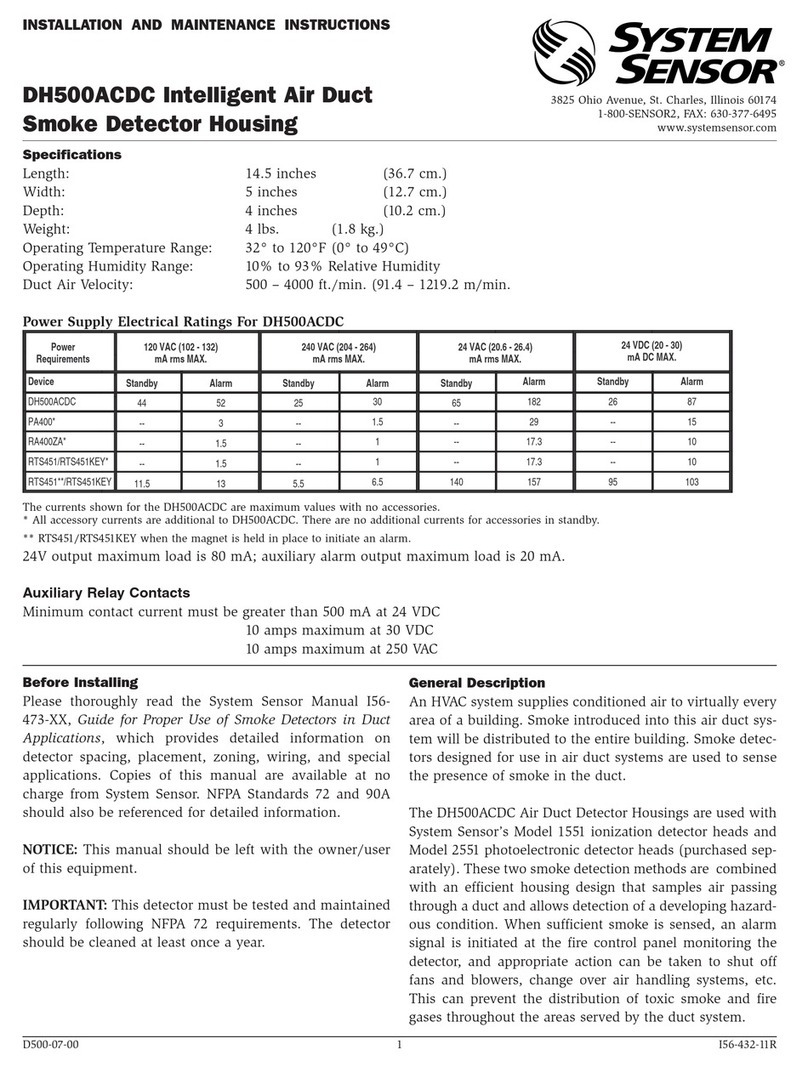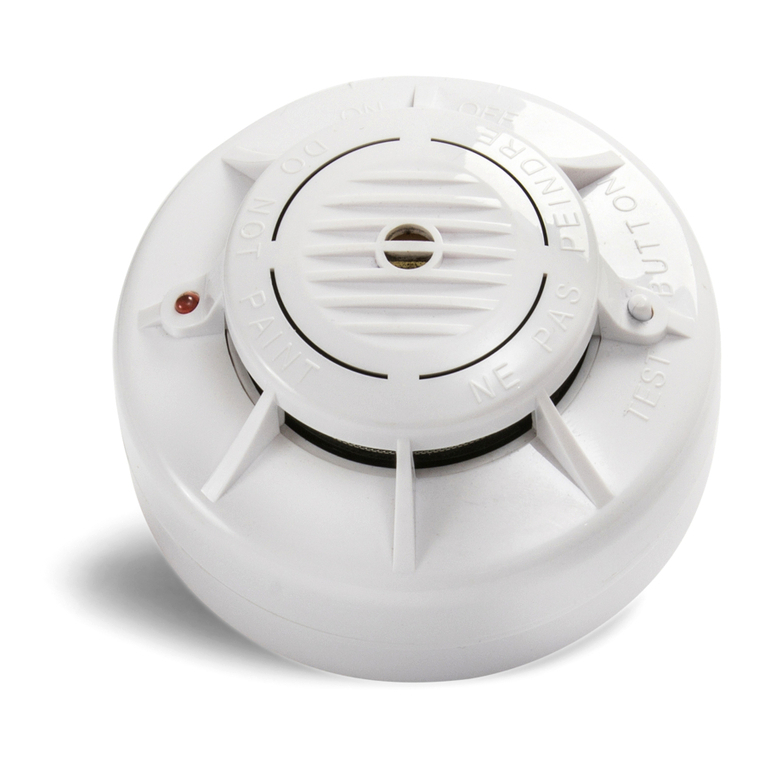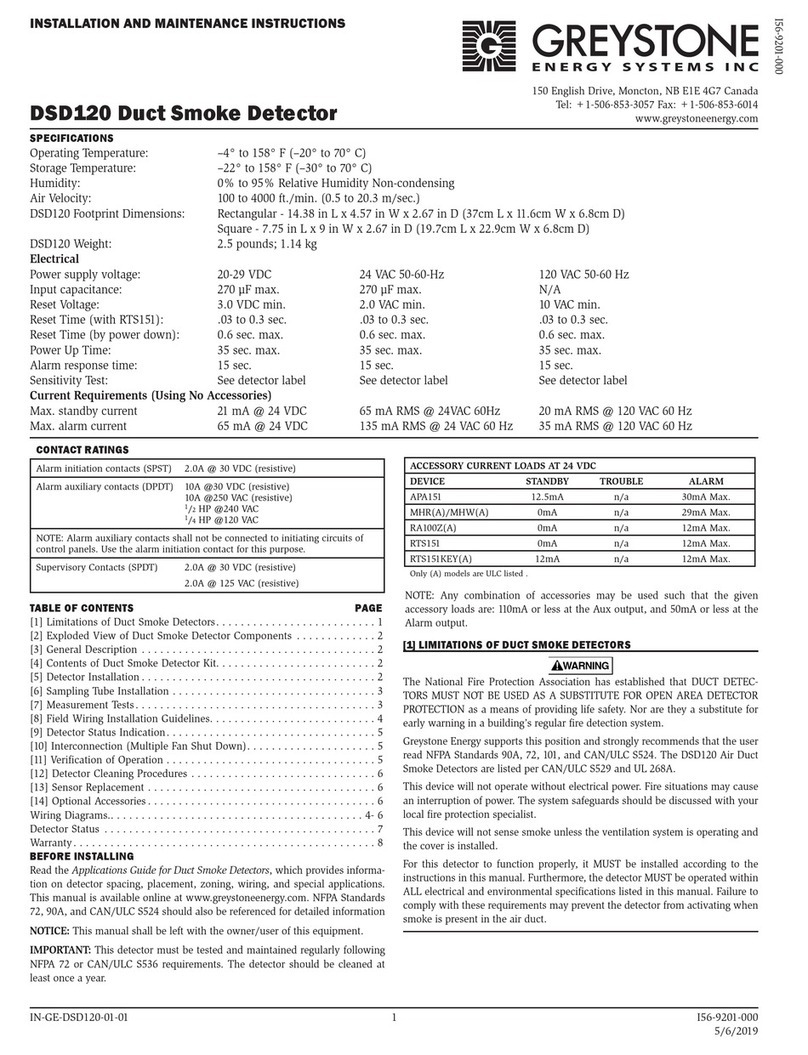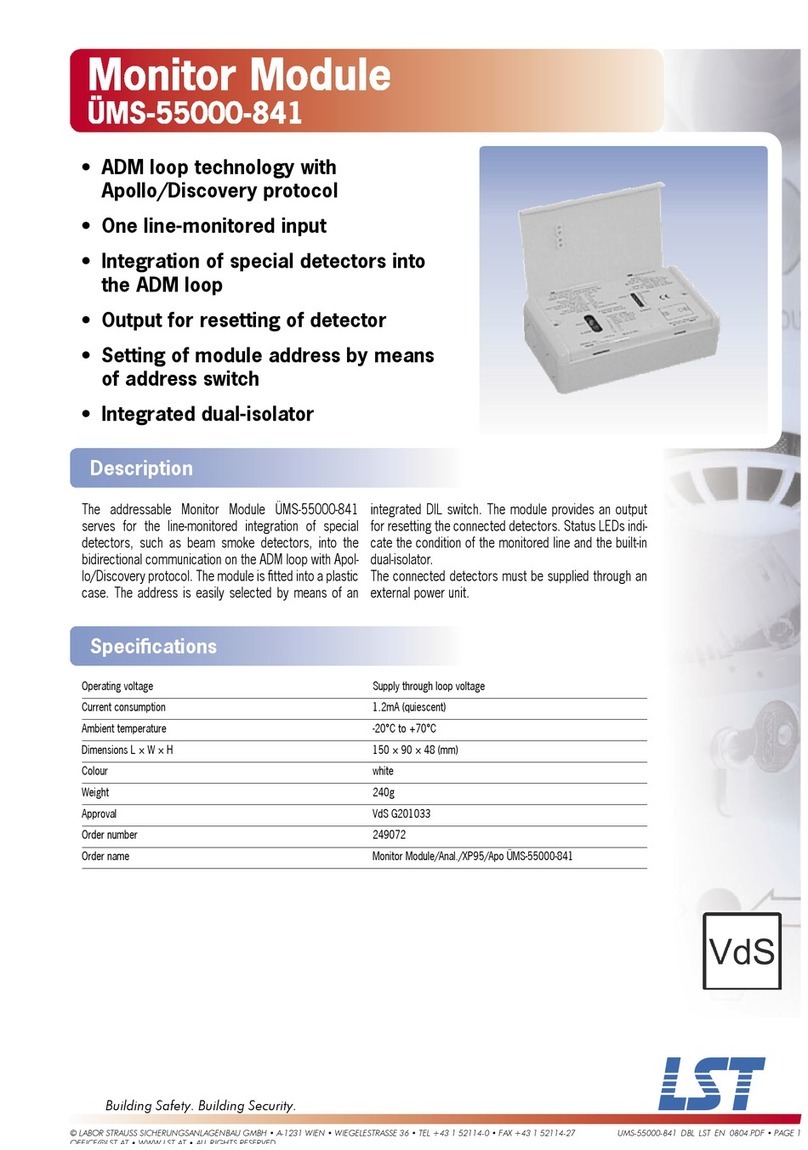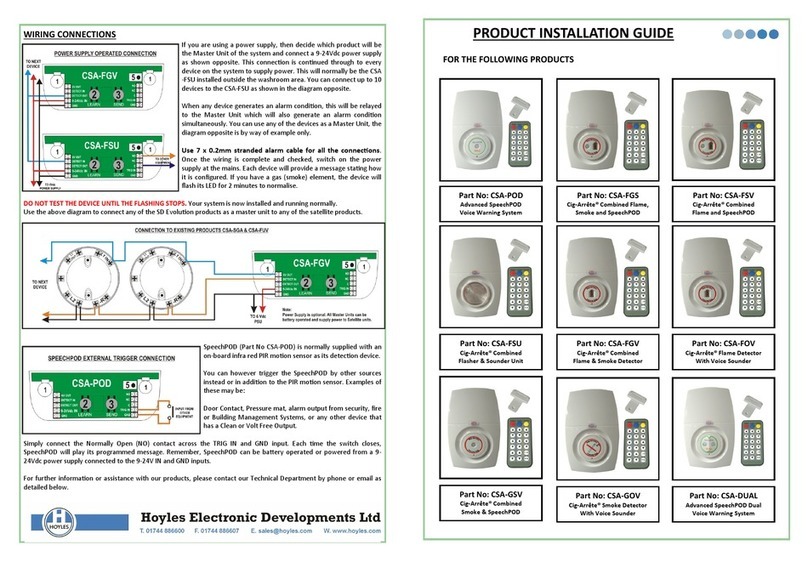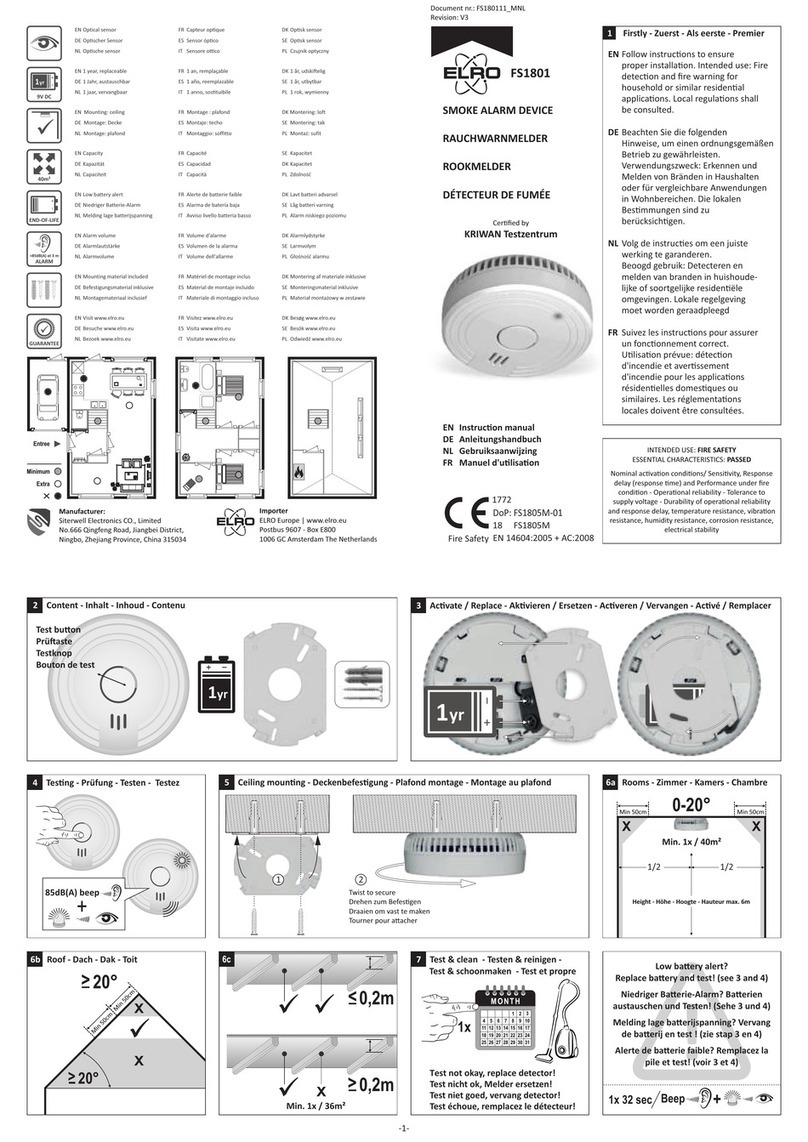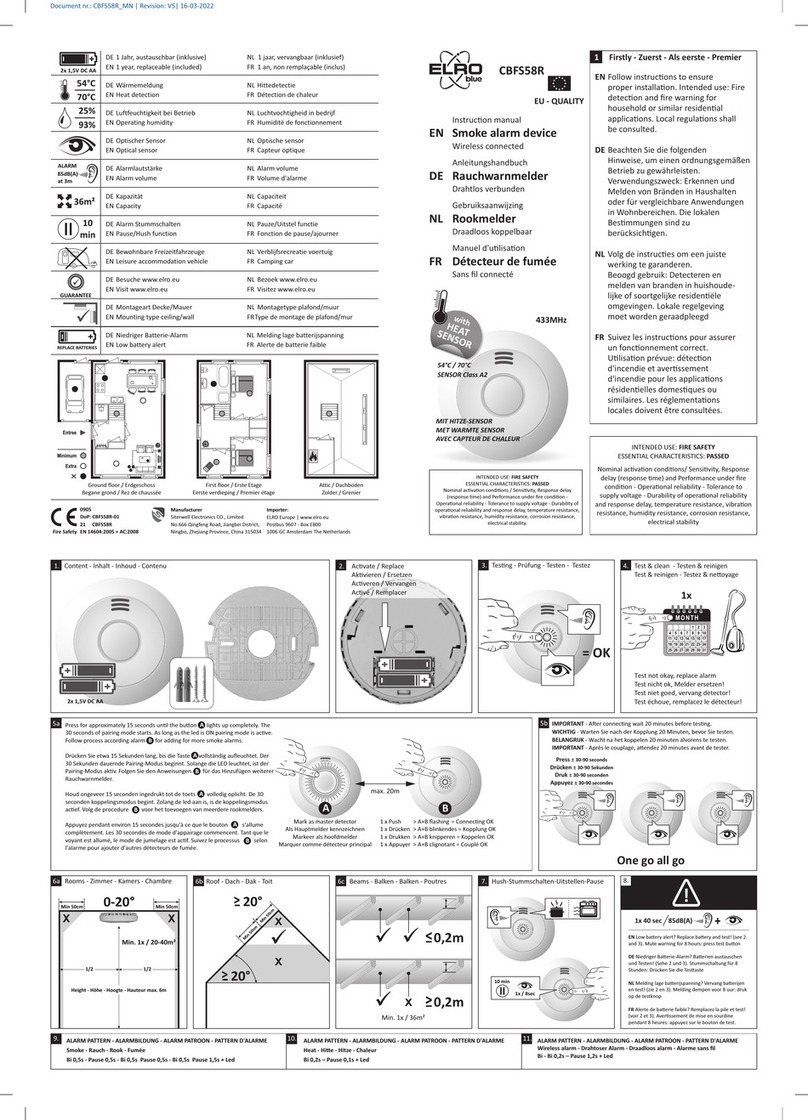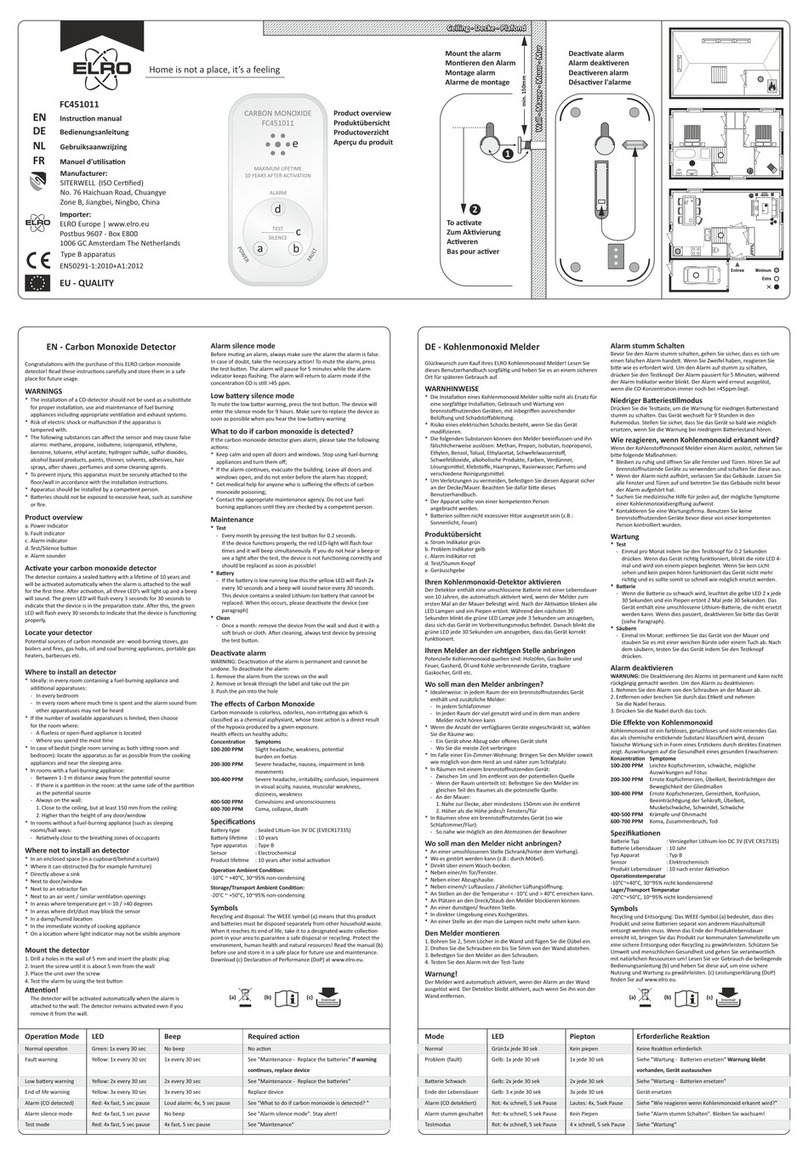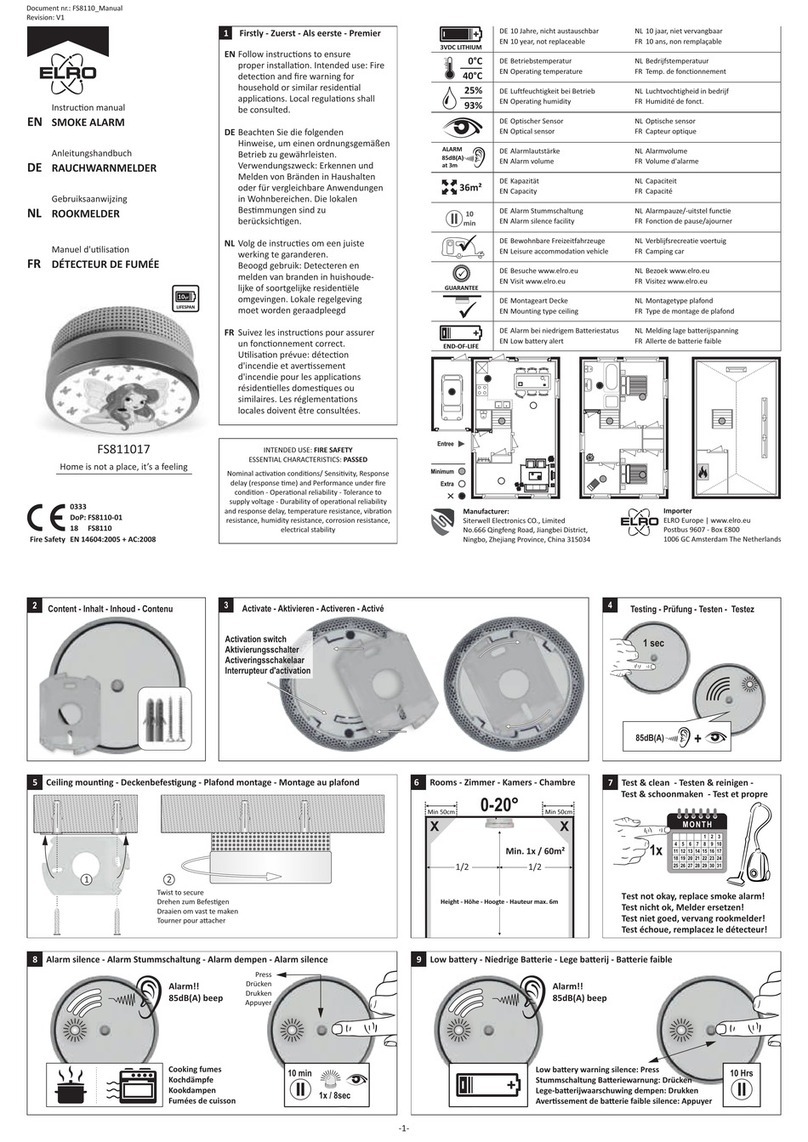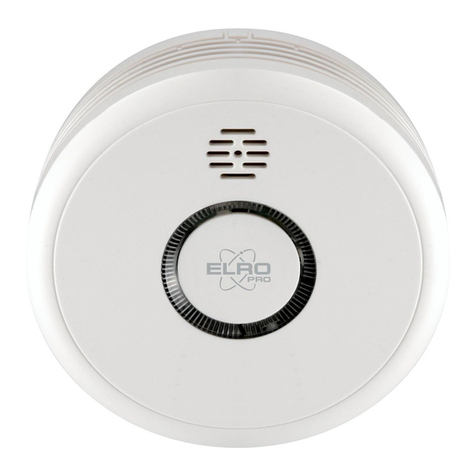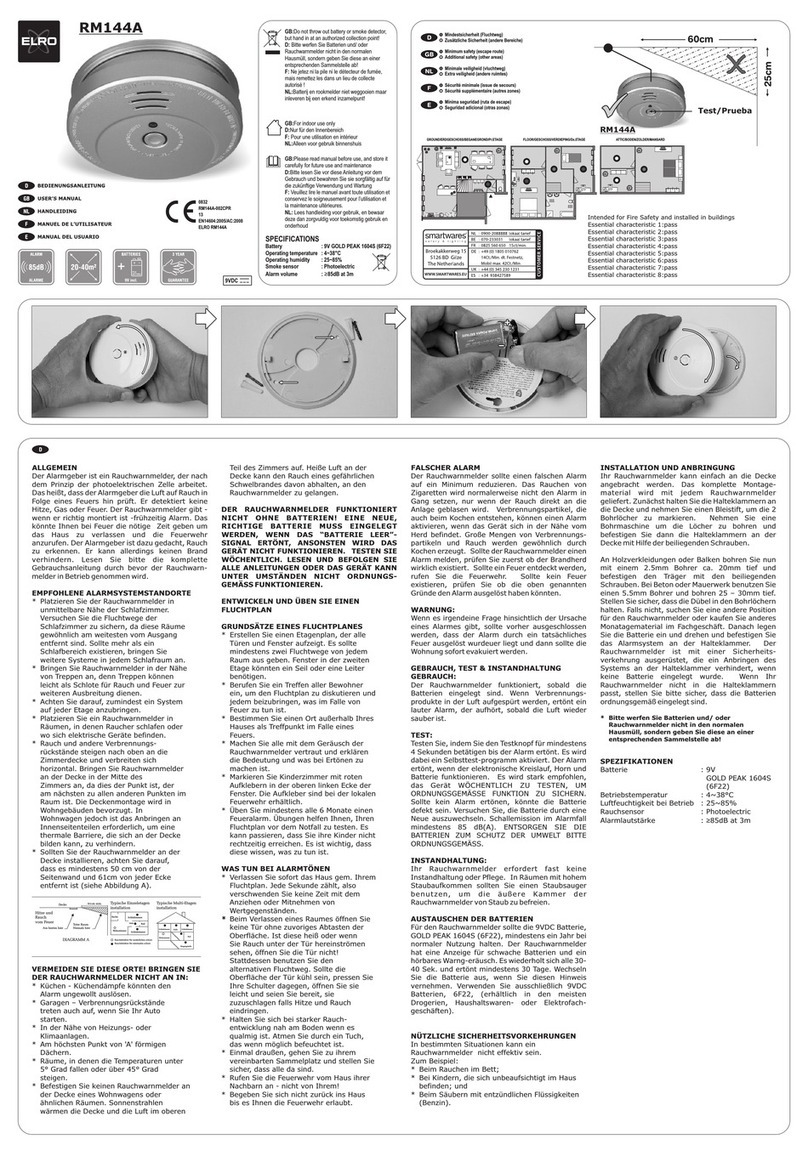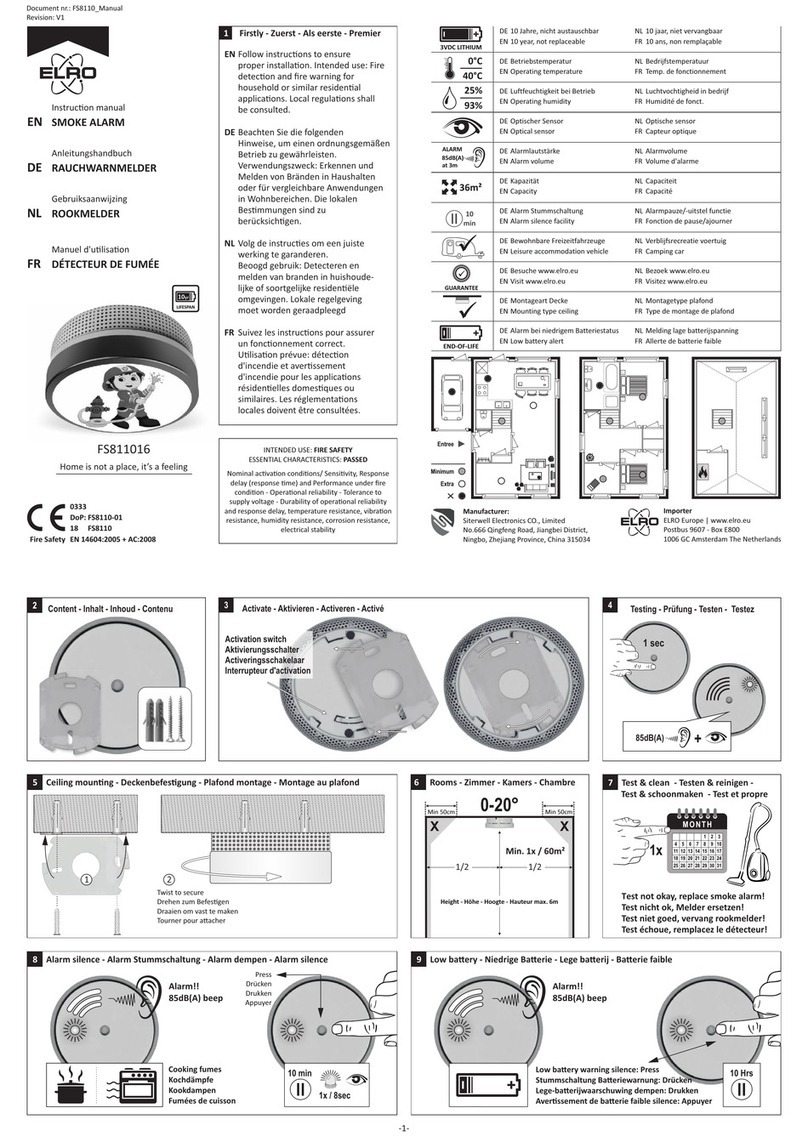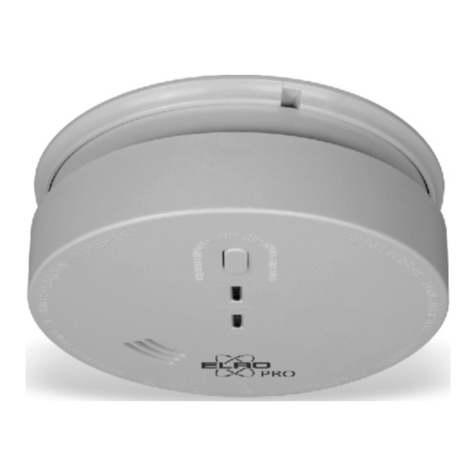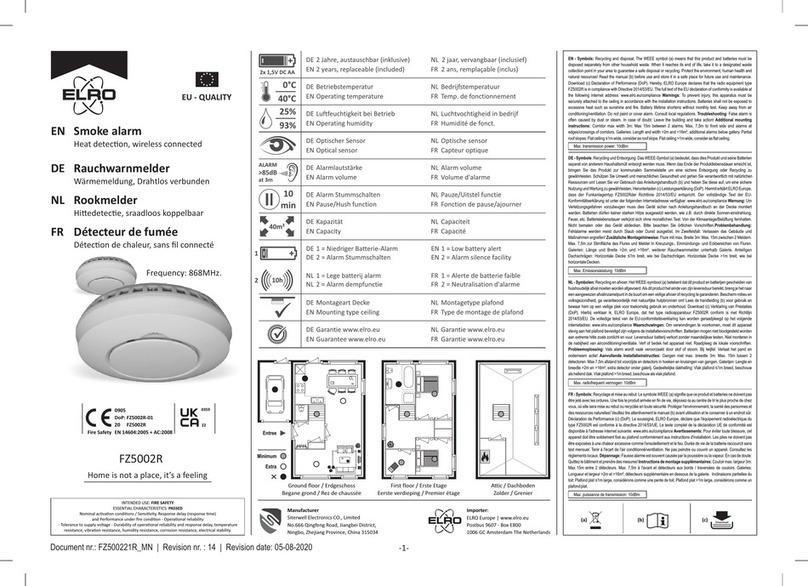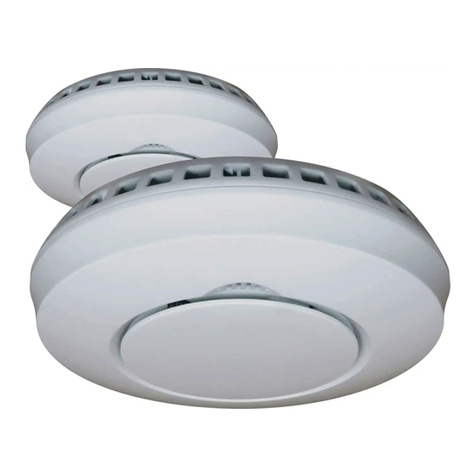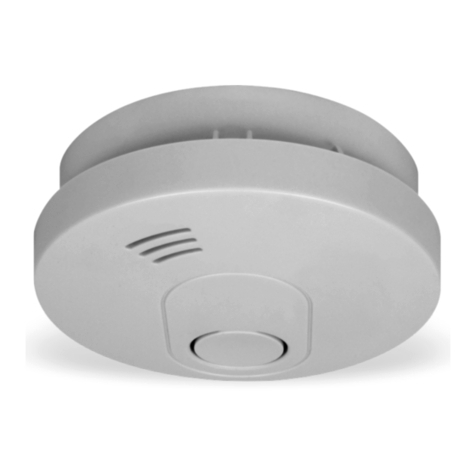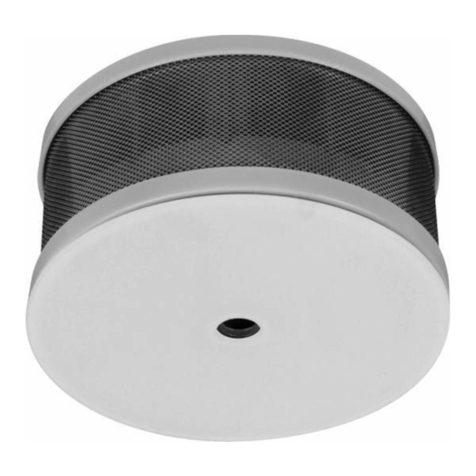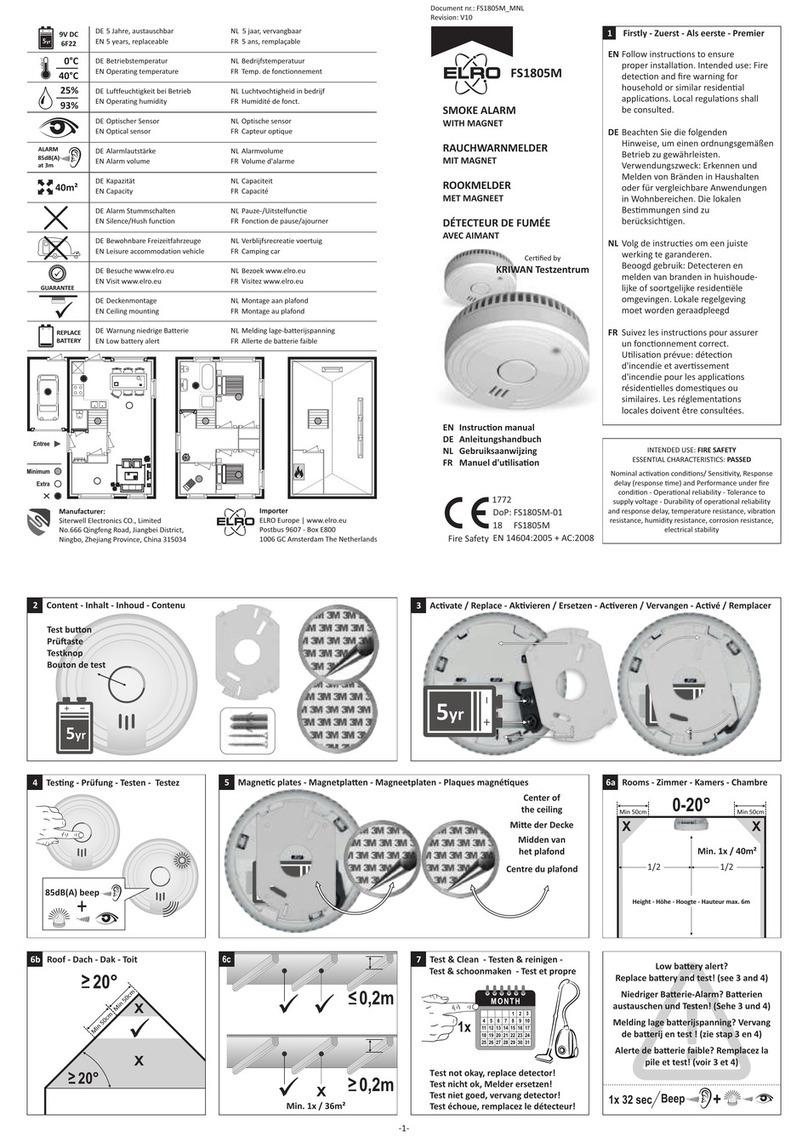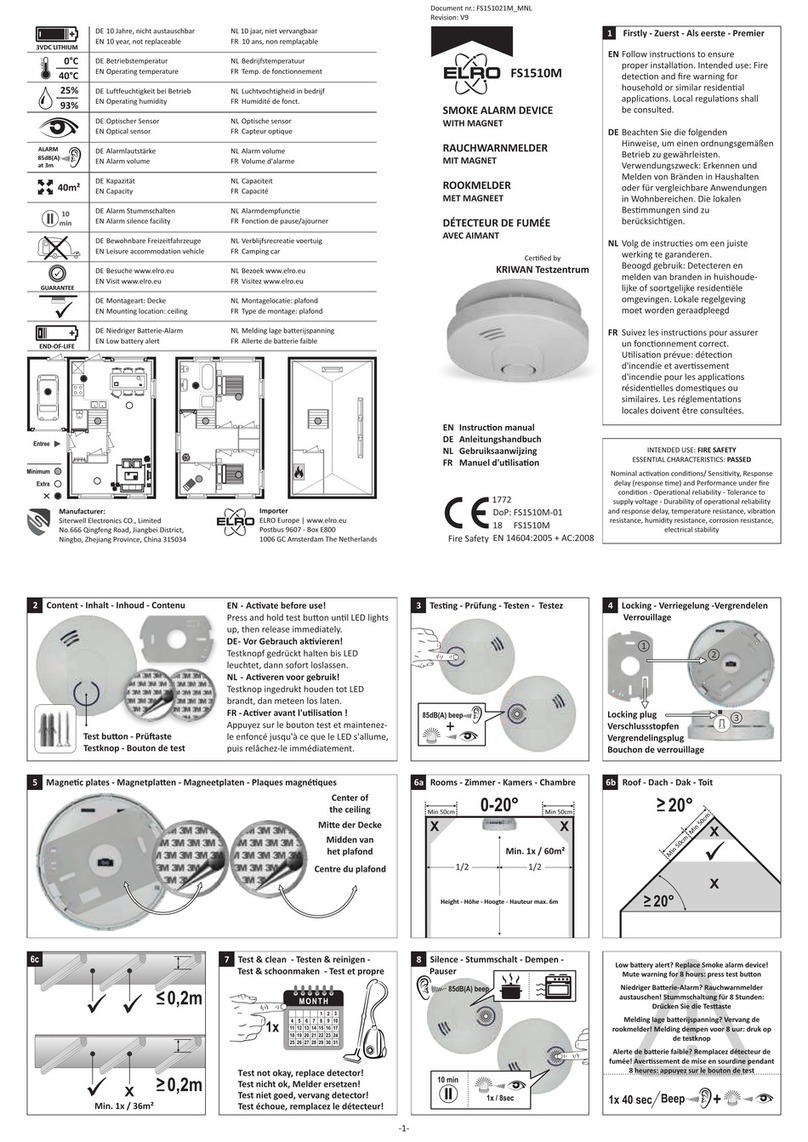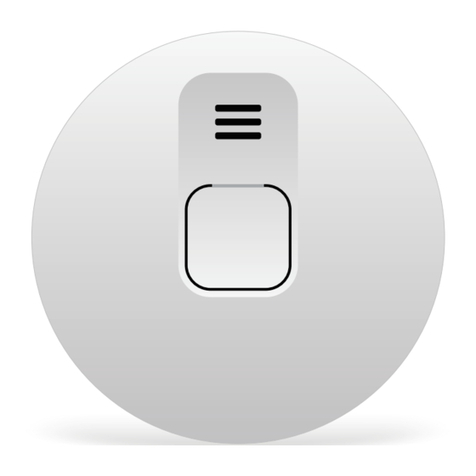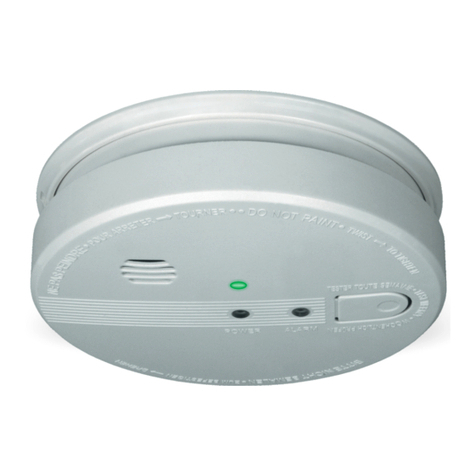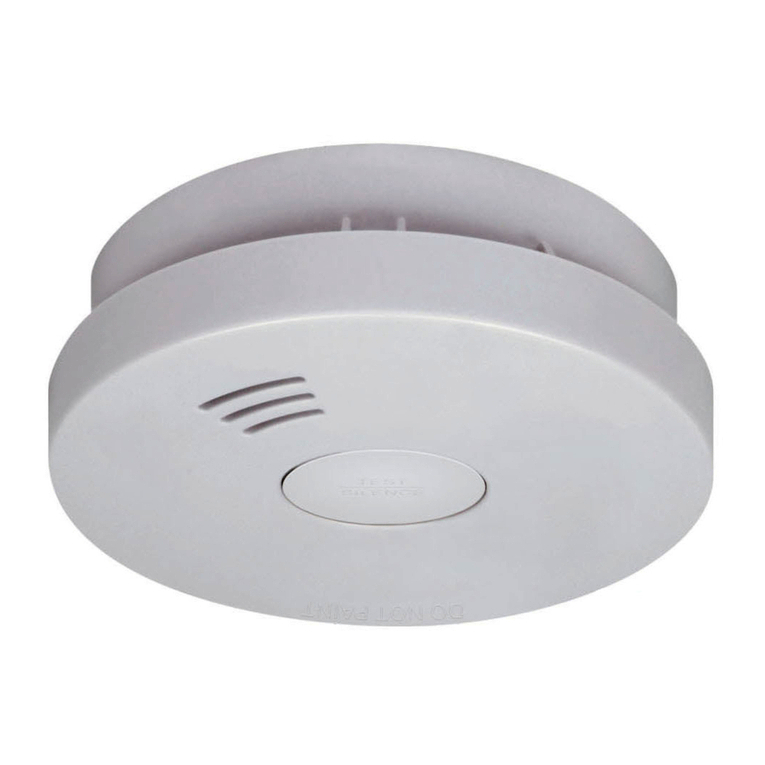
EN - Carbon Monoxide DetectorCongratulaons with the purchase of this ELRO carbon monoxide detector! Read these instrucons carefully and store them in a safe place for future usage. WARNINGS* The installaon of a CO-detector should not be used as a substute for proper installaon, use and maintenance of fuel burning appliances including appropriate venlaon and exhaust systems. * Risk of electric shock or malfuncon if the apparatus is tampered with. * The following substances can affect the sensor and may cause false alarms: methane, propane, isobutene, isopropanol, ethylene, benzene, toluene, ethyl acetate, hydrogen sulfide, sulfur dioxides, alcohol based products, paints, thinner, solvents, adhesives, hair sprays, aer shaves ,perfumes and some cleaning agents.* To prevent injury, this apparatus must be securely aached to the floor/wall in accordance with the installaon instrucons.* Apparatus should be installed by a competent person. * Baeries should not be exposed to excessive heat, such as sunshine or fire. Product overviewa. Power indicator greenb. Fault indicator yellowc. Alarm indicator redd. Test/Silence buone. Alarm sounderAcvate your carbon monoxide detector* Open baery department* Place baery* Close baery departmentIf acvated correctly, all LED’s will light up you will hear a beep.* The next 30 seconds: The green LED will flash every 3 seconds to indicate that the device is in the preparaon state.* Aer 30 seconds: the power indicator will flash every 30 seconds and the acvaon has succeeded. Test the alarm by pressing the test buon for 0.2 seconds, the device enters the “Test mode“. Locate your detectorPotenal sources of carbon monoxide are: wood-burning stoves, gas boilers and fires, gas hobs, oil and coal burning appliances, portable gas heaters, barbecues etc. Where to install an detector* Ideally: in every room containing a fuel-burning appliance and addional apparatuses: - In every bedroom - In every room where much me is spent and the alarm sound from other apparatuses may not be heard* If the number of available apparatuses is limited, then choose for the room where: - A flueless or open-flued appliance is located - Where you spend the most me* In case of bedsit (single room serving as both sing room and bedroom): locate the apparatus as far as possible from the cooking appliances and near the sleeping area. * In rooms with a fuel-burning appliance: - Between 1-3 m distance away from the potenal source - If there is a paron in the room: at the same side of the paron as the potenal source - Always on the wall: 1. Close to the ceiling, but at least 150 mm from the ceiling 2. Higher than the height of any door/window* In rooms without a fuel-burning appliance (such as sleeping rooms/hall ways: - Relavely close to the breathing zones of occupantsWhere not to install an detector* In an enclosed space (in a cupboard/behind a curtain)* Where it can obstructed (by for example furniture)* Directly above a sink* Next to door/window* Next to an extractor fan* Next to an air vent / similar venlaon openings* In areas where temperature get < -10°C / > 40°C* In areas where dirt/dust may block the sensor* In a damp/humid locaon* In the immediate vicinity of cooking appliance* On a locaon where light indicator may not be visible anymoreMount the detector1. Drill a holes in the wall of 5 mm and insert the plasc plug. 2. Insert the screw unl it is about 5 mm from the wall3. Place the unit over the screw4. Test the alarm by using the test buon Alarm silence modeBefore mung an alarm, always make sure the alarm the alarm is false. In case of doubt, take the necessary acon! To mute the alarm, press the test buon. The alarm will pause for 5 minutes while the alarm indicator keeps flashing. The alarm will return to alarm mode if the concentraon CO is sll >45 ppm. Low baery silence modeTo mute the low baer warning, press the test buon. The device will enter the silence mode for 9 hours. Make sure to replace the device as soon as possible when you hear the low-baery warningWhat to do if carbon monoxide is detected? If the carbon monoxide detector gives alarm, please take the following acons:* Keep calm and open all doors and windows. Stop using fuel-burning appliances and turn them off;* If the alarm connues, evacuate the building. Leave all doors and windows open, and do not enter before the alarm has stopped;* Get medical help for anyone who is suffering the effects of carbon monoxide poisoning;* Contact the appropriate maintenance agency. Do not use fuel- burning appliances unl they are checked by a competent person.Maintenance* Test your Carbon Monoxide alarm every month by pressing the test buon for 0.2 seconds. - If the device funcons properly, the red LED-light will flash four mes and it will beep simultaneously. If you do not hear a beep or see a light aer the test, the device is not funconing correctly and should be replaced as soon as possible! * Replace the baeries. If the baeries are running low the yellow LED will flash 2 x every 30 seconds and a beep will sound twice every 30 seconds. If this occurs, replace the baeries as soon as possible: - Open baery department - Place baeries - Close baery departmentWarning: Always test the alarm aer replacing the baeries by pressing the test buon Warning: Replace only by the following baery types: GP GN15A, Raymax LR6* Clean your device once a month: remove the device from the wall and dust it with a so brush or cloth. Aer cleaning, always test device by pressing the test buon. The effects of Carbon MonoxideCarbon monoxide is colorless, odorless, non-irritang gas which is classified as a chemical asphyxiant, whose toxic acon is a direct result of the hypoxia produced by a given exposure. Health effects on healthy adults: Concentraon Symptoms 100-200 PPM Slight headache, weakness, potenal burden on foetus 200-300 PPM Severe headache, nausea, impairment in limb movements 300-400 PPM Severe headache, irritability, confusion, impairment in visual acuity, nausea, muscular weakness, dizziness, weakness400-500 PPM Convulsions and unconsciousness 600-700 PPM Coma, collapse, deathSpecificaonsBaery type : 2x 1,5V Type AA (3V DC)Baery lifeme : 2 yearsType apparatus : Type BSensor : ElectrochemicalAlarm volume : > 85 dB (A) at 1 metersProduct lifeme : 10 years aer inial acvaonOperaon Ambient Condion: -10°C ~ +40°C, 30 ~ 95% non-condensingStorage/Transport Ambient Condion: -20°C ~ +50°C, 10 ~ 95% non-condensingSymbolsRecycling and disposal: The WEEE symbol (a) means that this product and baeries must be disposed separately from other household waste. When it reaches its end of life, take it to a designated waste collecon point in your area to guarantee a safe disposal or recycling. Protect the environment, human health and natural resources! Read the manual (b) before use and store it in a safe place for future use and maintenance. (a)(b)Operaon Mode LED Beep Required aconNormal operaon Green: 1x every 30 sec No beep No aconFault warning Yellow: 1x every 30 sec 1x every 30 sec See "Maintenance - Replace the baeries" If warning connues, replace deviceLow baery warning Yellow: 2x every 30 sec 2x every 30 sec See "Maintenance - Replace the baeries"End of life warning Yellow: 3x every 30 sec 3x every 30 sec Replace deviceAlarm (CO detected) Red: 4x fast, 5 sec pause Loud alarm: 4x, 5 sec pause See "What to do if carbon monoxide is detected? " Alarm silence mode Red: 4x fast, 5 sec pause No beep See "Alarm silence mode". Stay alert! Test mode Red: 4x fast, 5 sec pause 4x fast, 5 sec pause See "Maintenance"DE - KohlenmonoxidmelderGlückwunsch zum Kauf ihres ELRO Kohlenmonoxidmelder! Lesen Sie dieses Benutzerhandbuch sorgfälg und heben Sie es an einem sicheren Ort für späteren Gebrauch auf.WARNHINWEISE* Die Installaon eines Kohlenmonoxidmelder sollte nicht als Ersatz für eine sorgfälge Installaon, Gebrauch und Wartung von brennstoffnutzenden Geräten, mit inbegriffen ausreichender Belüung und Schadstoffableitung.* Risiko eines elektrischen Schocks besteht, wenn Sie das Gerät modifizieren.* Die folgenden Substanzen können den Melder beeinflussen und ihn fälschlicherweise auslösen: Methan, Propan, Isobutan, Isopropanol, Ethylen, Benzol, Toluol, Ethylacetat, Schwefelwasserstoff, Schwefeldioxide, alkoholische Produkte, Farben, Verdünner, Lösungsmiel, Klebstoffe, Haarsprays, Rasierwasser, Parfums und verschiedene Reinigungsmiel.* Um Verletzungen zu vermeiden, befesgen Sie diesen Apparat sicher an der Decke/Mauer. Beachten Sie dafür bie dieses Benutzerhandbuch.* Der Apparat sollte von einer kompetenten Person angebracht werden.* Baerien sollten nicht exzessiver Hitze ausgesetzt sein (z.B.: Sonnenlicht, Feuer)Produktübersichta. Strom Indikator grün b. Problem Indikator gelb c. Alarm Indikator rot d. Test/Stumm Knopf e. GeräuschgebeIhren Kohlenmonoxid Melder akvieren* Öffnen Sie das Baeriefach* Legen Sie die Baerie ein* Schließen Sie das BaeriefachWenn richg akviert, 3 LEDs leuchten und Sie hören ein Piepen.* In den nächsten 30 Sekunden: Die grüne LED Lampe blinkt jede 3 Sekunden um anzugeben, dass sich das Gerät im Vorbereitungsmodus befindet.* Nach 30 Sekunden, Leuchtet der Strom Indikator jede 30 Sekunden und die Akvaon war erfolgreich. Testen Sie den Alarm, indem Sie die Tesaste für 0,2 Sekunden drücken. Das Gerät wechselt in den "Testmodus".Ihren Melder an der richgen Stelle anbringenPotenzielle Kohlenmonoxid quellen sind: Holzöfen, Gas Boiler und Feuer, Gasherd, Öl und Kohle verbrennende Geräte, tragbare Gaskocher, Grill etc.Wo soll man den Melder anbringen?* Idealerweise: in jedem Raum der ein brennstoffnutzendes Gerät enthält und zusätzliche Melder: - In jedem Schlafzimmer - In jeden Raum der viel genutzt wird und in dem man andere Melder nicht hören kann* Wenn die Anzahl der verfügbaren Geräte eingeschränkt ist, wählen Sie die Räume wo: - Ein Gerät ohne Abzug oder offenes Gerät steht - Wo Sie die meiste Zeit verbringen* Im Falle einer Ein-Zimmer-Wohnung: Bringen Sie den Melder soweit wie möglich von dem Herd an und näher zum Schlafplatz* In Räumen mit einem brennstoffnutzenden Gerät: - Zwischen 1m und 3m enernt von der potenellen Quelle - Wenn der Raum unterteilt ist: Befesgen Sie den Melder im gleichen Teil des Raumes als die potenzielle Quelle. - An der Mauer: 1. Nahe zur Decke, aber mindestens 150mm von ihr enernt 2. Höher als die Höhe jedes/r Fensters/Tür* In Räumen ohne ein brennstoffnutzendes Gerät (so wie Schlafzimmer/Flur): - So nahe wie möglich an den Atemzonen der BewohnerWo soll man den Melder nicht anbringen?* An einer umschlossenen Stelle (Schrank/hinter dem Vorhang). * Wo es gestört werden kann (z.B.: durch Möbel). *




